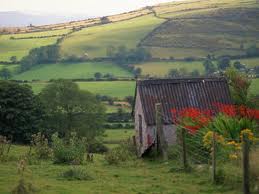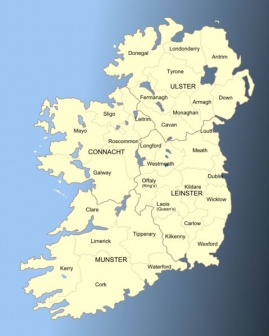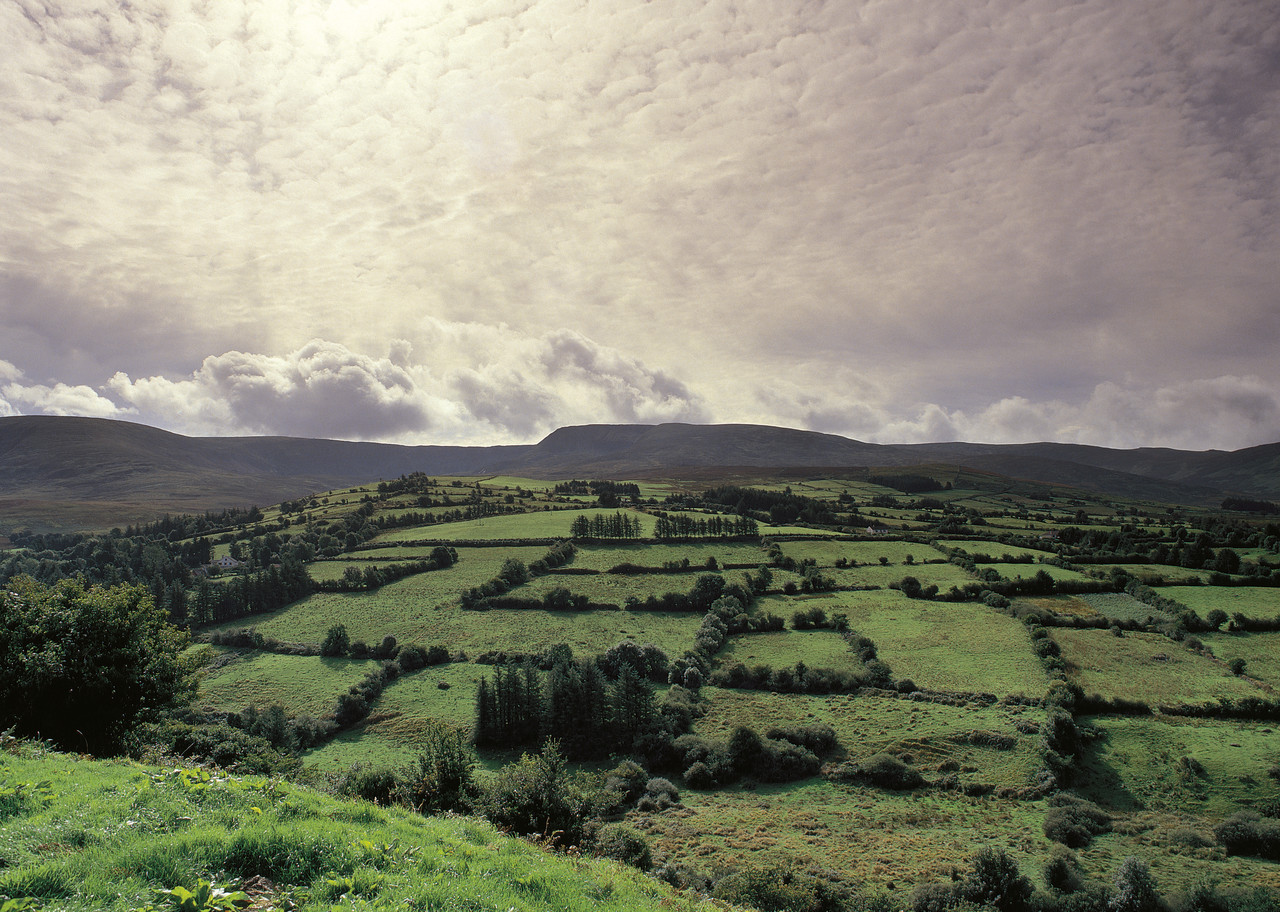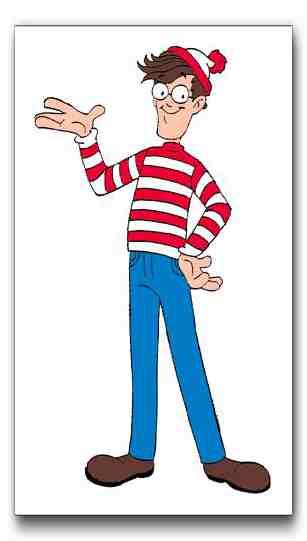Module Two: Finding Your Townland
Locating the Origin of an Immigrant
Ancestor
In this module you will learn about
Irish land jurisdictions, and how to search for a
townland using U.S. record, Irish maps, and other
resources.
"Do
you mean to tell me, Katie Scarlett O'Hara, that Tara,
that land doesn't mean anything to you? Why, land is
the only thing in the world worth working for, worth
fighting for, worth dying for, because it's the only
thing in the world that lasts." (Margaret Mitchell;
Gone with the Wind)

Irish Land Jurisdictions

- Province: There are four provinces in Ireland - Ulster, Leinster, Connaught, and Munster.
- County: There are 32 counties, six of them in Northern Ireland.
- Barony: Usually an area of land within a county, based on old tribal jurisdictions called tuatha.
- Diocese: An ecclesiastical division. There are 28 in Ireland.
- Civil parish: A subdivision of a barony. It usually does not correspond to the ecclesiastical parish.
- Townland: These are small areas of land. There are 64,000 townlands in Ireland. These are very important because they can identify specific land records.
The most important areas in
your search are the townland or parish. This is the
specific location where your Irish ancestors lived.
Although it may not be
possible to research your Irish family past the early
1800s, since the Irish were a relatively immobile
society you can identify your ancestral homeland. When
you find it, it is likely that you have hundreds of
years of history in that area.
For more information about
each of the land divisions, read the article Irish
Land Divisions.
How Do I Find a Townland?
The key to success in Irish
research is finding the townland, parish, or at least
county of origin. It is possible to be successful
without this information, but it is much harder. The
name of the townland is often garbled in family
tradition - Emly becomes Emily, Knockfierna becomes
Knock.
Some of the best places to look for information about the townland or parish of a ancestor are:
- Family traditions
- Obituaries
- Death certificates
- Gravestones
- Local and church parish histories
- Newspapers
If you can't find any
information for your ancestor, try searching for their
siblings.
For other ideas on
resources to check, read the article Irish
Ancestry, The Hunt for the Townland.
When you find a townland,
there are several resources online to help you
determine its parish, barony, and province. The Ireland
Townland Database can provide this information.
If you only have a parish you can enter the parish and
county, and the database will list all of the
townlands in that parish for you. You can also Google
your parish and townland, and may be able to locate
the townland on a map.

Localizing a Surname
If you haven't had any luck in locating a townland or parish, you may be able to localize the surname.
If your surname is unusual, it is possible to determine the most likely location in Ireland for research. If you surname is O'Brien, this won't work, as it is a very common name. One of my surnames is Leddin, which was fortunate as nearly all Leddins are found in eastern County Limerick.
The Irish Times website will allow you to search for a specific surname. The results of your search will show the most likely county location to search.
The standard source for localizing a surname is Edward MacLysaght's The Surnames of Ireland, which is available at Amazon.com and most family history libraries.
Module Two Assignments
Assignment One: Use the database listed in the course materials to find the province, parish, and barony for the townland of Ballynahaha in County Limerick.
Assignment Two: Where's Jeffrey? To practice your research skills, you will conduct a search for a missing person.

- You are looking for Jeffrey Carey, and clues will be provided to you in an online module.
- When the module appears in a new window, select the Home tab for the first clue. Each tab will have a new clue.
- Let's look at the module: Where's Jeffrey?.
- Don't forget to start by clicking on the Home tab. See if you can solve the mystery of Jeffrey's birthplace.
Assignment Three: Continue your own
personal research, looking for your ancestor's
birthplace. Record your findings.